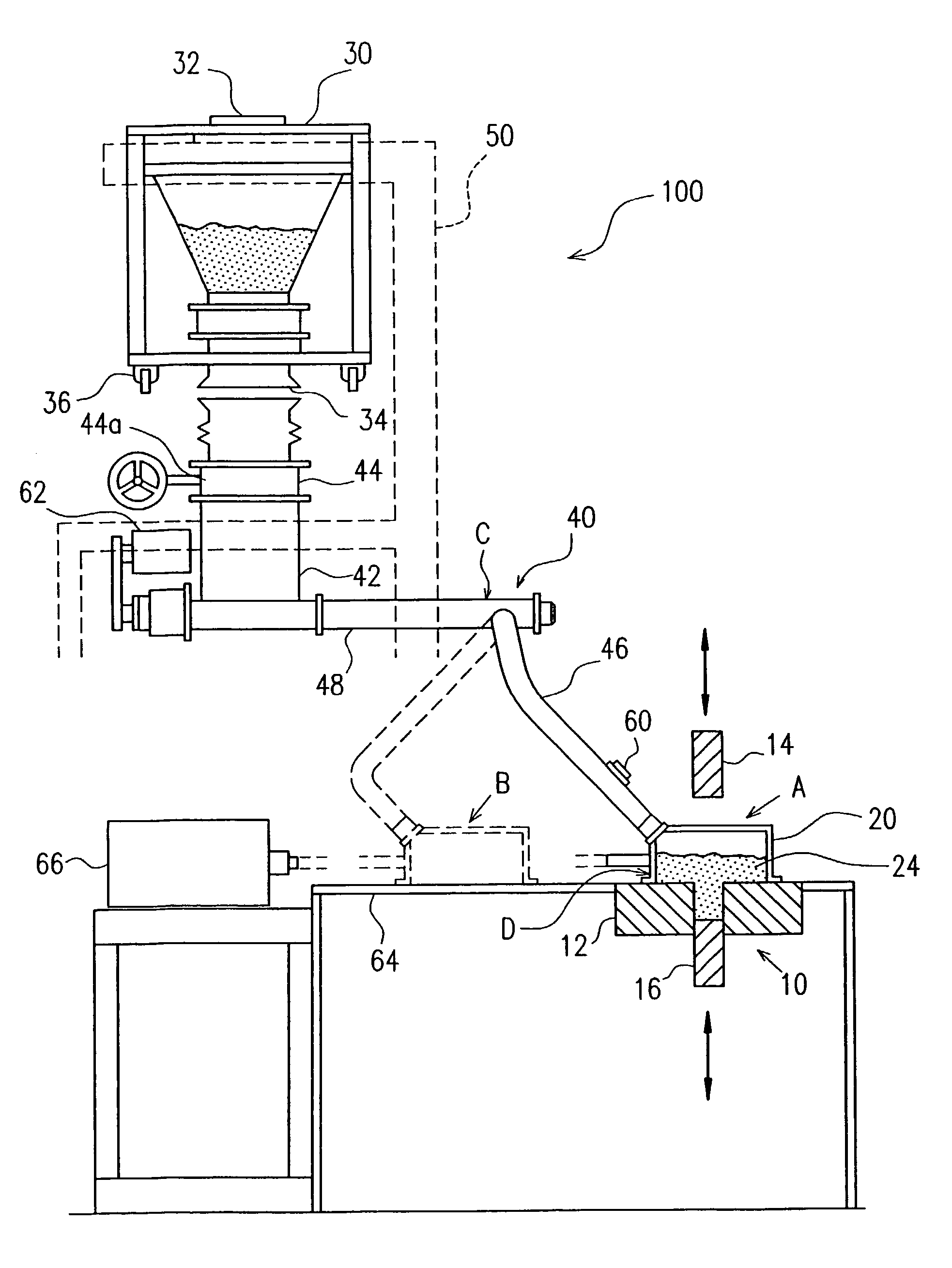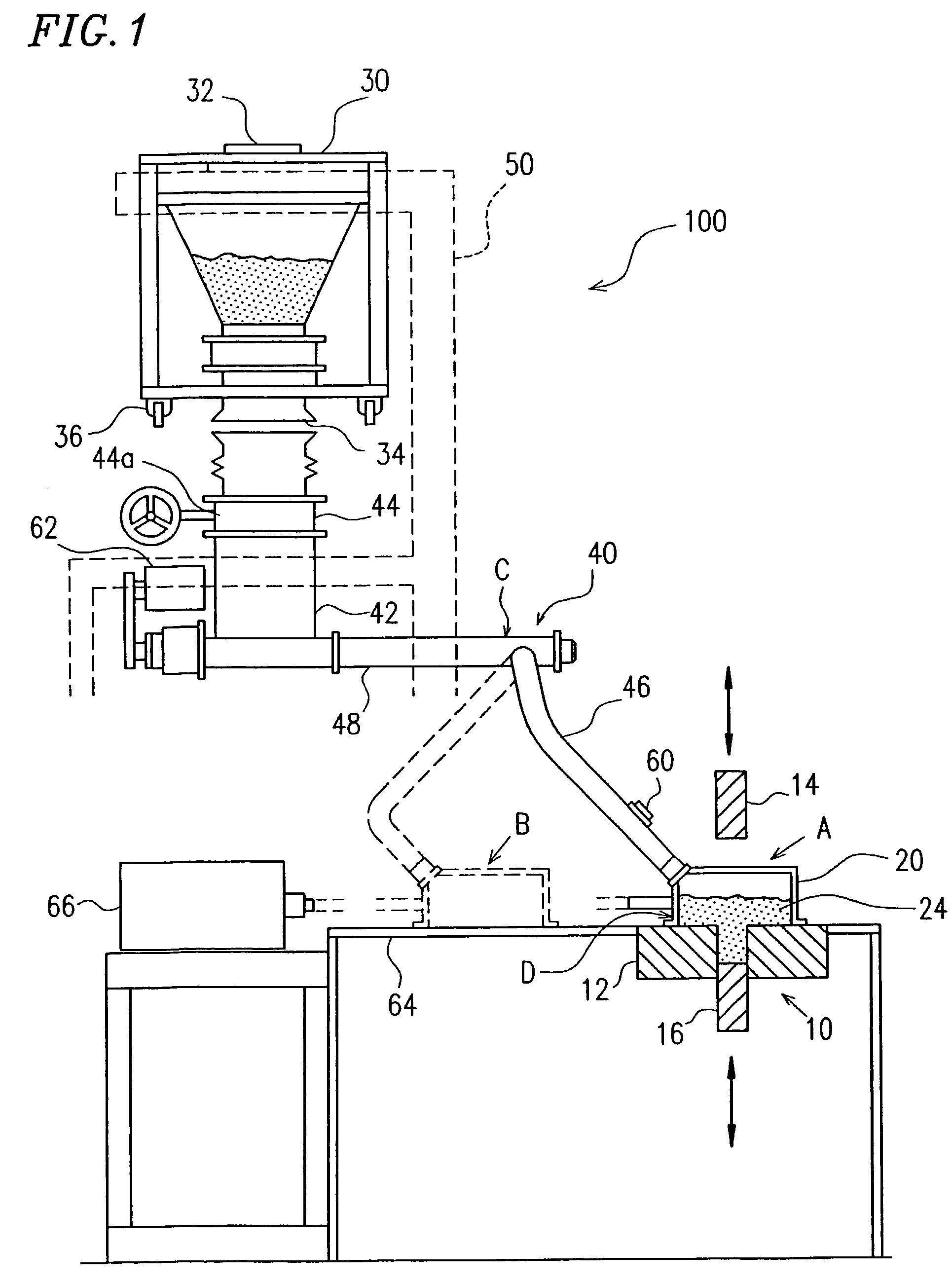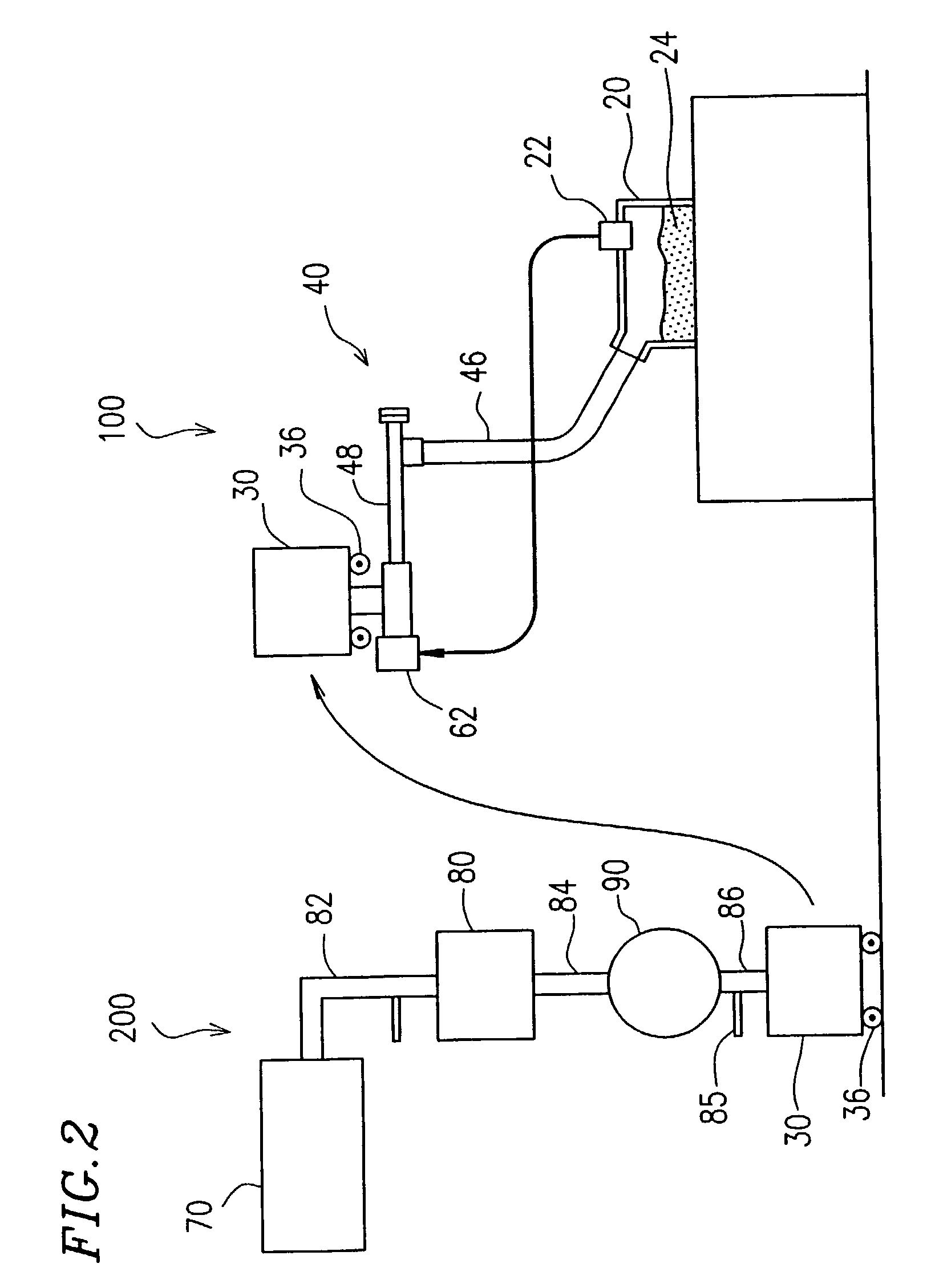However, a
magnetic powder of a rapidly-cooled alloy such as a strip-cast alloy is easily oxidized.
Even if oxidization stops short of igniting the powder, the magnetic properties of the powder deteriorate significantly due to the oxidization.
While the heating and ignition of the rare-earth component due to oxidization occur also when compacting a rare-earth alloy powder that has been made by a conventional
ingot casting method, the problem is more pronounced when compacting a powder of a rapidly-cooled alloy such as a strip-cast alloy.
In addition to the problem described above, the oxidization of a rare-earth alloy powder also causes a problem as follows.
Although it is preferred to reduce the amount of
oxygen in a rare-earth alloy powder that is used to produce an R—Fe—B magnet, as described above, the method of reducing the amount of oxygen in a rare-earth alloy powder to improve the magnet properties has not been realized as a
mass-producing technique for the following reason.
Thus, although it was understood that it would be preferred to reduce the amount of oxygen in the rare-earth alloy powder in order to improve the magnetic properties thereof, it was actually difficult to
handle a rare-earth alloy powder with such a reduced oxygen concentration at a manufacturing site such as a
plant.
Particularly, in a pressing step for compacting a powder, the temperature of the compact increases due to the frictional heat that is generated between powder particles being compacted and / or the frictional heat that is generated between the powder and the inner wall of the cavity when the compact is taken out of the cavity, thereby increasing the risk of ignition.
However, the conventional compacting apparatus is uneconomical because the
gas chamber has a relatively large volume, thereby requiring a large amount of
inert gas to fill the
gas chamber.
In the conventional compacting apparatus, the
inert gas is not supplied directly to the rare-earth alloy powder, and the space around the passageway via which the rare-earth alloy powder (or the compact) is transferred (e.g., the space around the powder feeding device) is also exposed to a
high concentration of
inert gas, thereby failing to effectively utilize the
inert gas.
Moreover, in cases where the inside of the
gas chamber is frequently exposed to the
air atmosphere (e.g., where die replacement is frequently needed for making various types of compacts), the use of the conventional apparatus significantly reduces the productivity as it requires a long period of time for substituting the gas in the gas chamber with an
inert gas each time a die is replaced by another.
Moreover, although the pressing step with a compacting apparatus is automated, the compacting apparatus requires frequent maintenance, and such maintenance often requires a
human operator.
If the compacting apparatus is placed in an inert
atmosphere, an operator who comes close to the compacting apparatus for trouble shooting may suffer from atmospheric hypoxia.
For these and other reasons, placing the entire compacting apparatus in an inert
atmosphere is not a practical approach.
Although such addition of a liquid
lubricant forms a thin oily
coating on the surface of the powder particles, it cannot sufficiently prevent the oxidization of the powder when a powder whose oxygen concentration is less than or equal to 4000
mass ppm is exposed to the
atmospheric air.
However, the presence of the oxidized
coating on the powder particle surface increases the total amount of oxygen contained in the powder.
However, this
conventional technique leads to a poor productivity because, after filling the cavity of the compacting apparatus with an R—Fe—B alloy powder in the form of a
slurry, it is necessary to perform the pressing step while squeezing the oil component out of the alloy powder.
 Login to View More
Login to View More 


